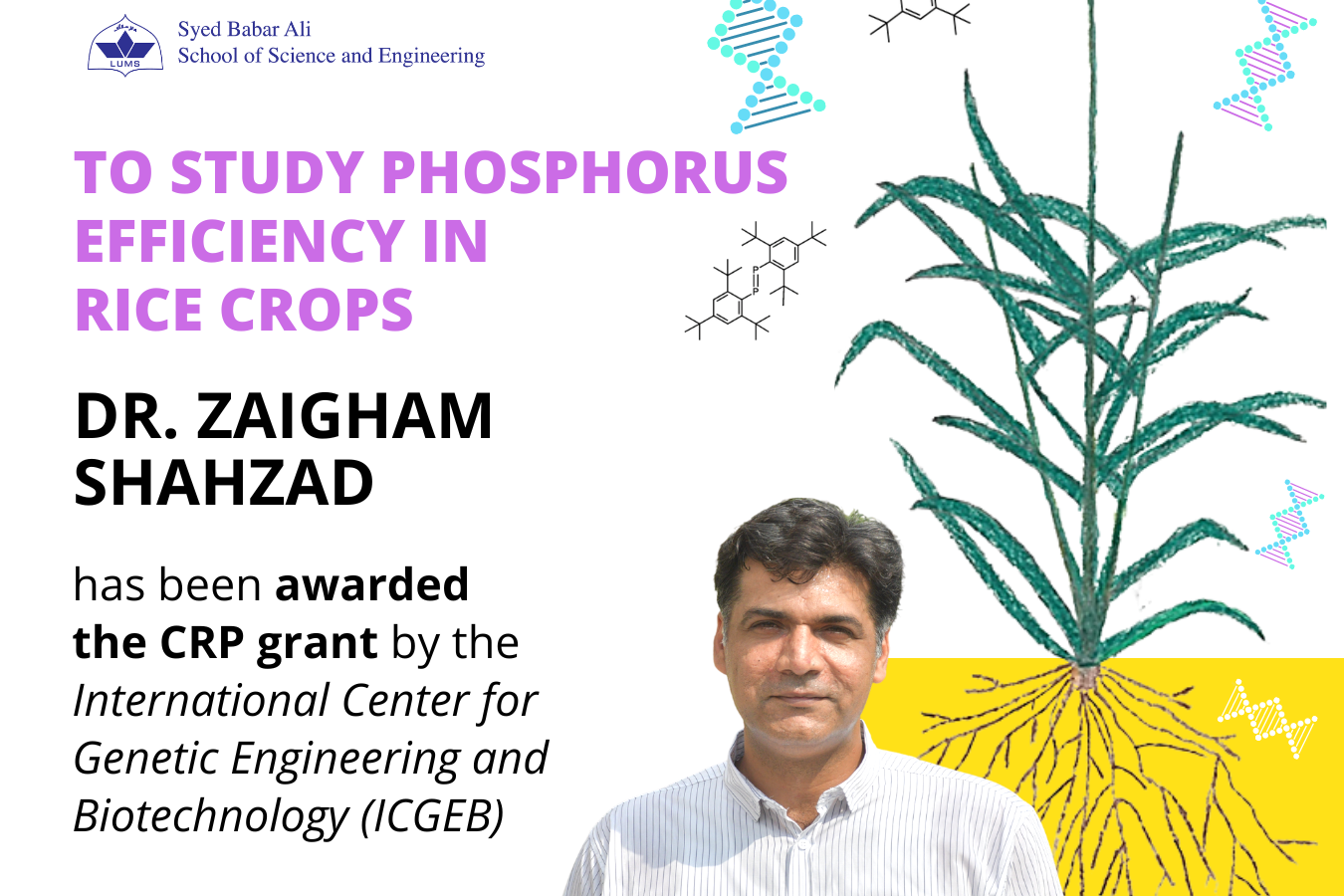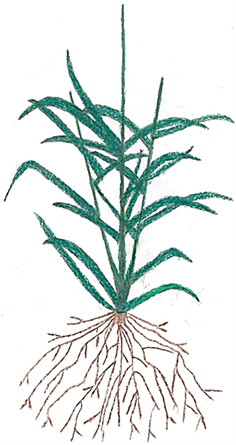
Research grant awarded to improve phosphorus utilization in rice
Dr. Zaigham Shahzad, a renowned plant biologist in the Department of Life Sciences at SBASSE, has been awarded an internationally competitive Collaborative Research Programme (CRP) grant worth Rs. 18 million by International Center for Genetic Engineering and Biotechnology (ICGEB). This grant will provide Dr. Shahzad and his team with the resources and funding necessary to study how to improve the utilization efficiency of an essential nutrient, phosphorus, in a globally important rice crop. The CRP-ICGEB grant has a long history of supporting cutting-edge research and is widely considered one of the most prestigious awards in the scientific community. The award of this grant to Dr. Shahzad is a clear indication of the high regard in which his peers and the scientific community hold him.
Rice is a source of calories for billions of people across the world. This is an extremely valuable cash crop for Pakistan - earning over Rs. 500 billion in foreign exchange through exports. Phosphorus is an essential nutrient for plant growth - required for various cellular processes such as DNA synthesis, energy transfer, and photosynthesis. Therefore, current rice production strategies rely heavily on phosphorus fertilization; however, this practice is not sustainable due to the expected depletion of phosphorus reserves. Furthermore, the addition of phosphorus fertilizer is becoming an increasingly uneconomical and ecologically unsound practice because crops use only 10 to 30% of applied phosphorus and the rest is wasted causing the eutrophication of water bodies. Therefore, there is a growing interest in cultivating rice with reduced phosphorus fertilization. To develop phosphorus-use efficient rice cultivars, it is imperative to understand how plants regulate phosphorus homeostasis and adjust growth to the availability of this essential nutrient.

Phosphorus is taken up by plant roots. Deficiency of this nutrient alters root system architecture (overall arrangement of primary and secondary roots), thereby influencing plants' ability to explore soil zones for nutrients. Dr. Shahzad said, “Although the last green revolution during the 1960s and 70s came by adjusting shoot architecture, the next green revolution could come through research on plants’ hidden half, root systems”. Therefore, it is essential to understand the mechanisms that control the adaptation of plant root systems to fluctuating environments. Numerous genetic components regulating root developmental responses to phosphate starvation have been identified in the model plant species, Arabidopsis. This knowledge could make an invaluable contribution to crop improvement. However, at this stage, we still lack a robust mechanistic model for rice root growth in phosphorus-deficient environments. This knowledge gap confuses the design and interpretation of screens for improved phosphorus use efficiency in the field.
The CRP grant will enable Dr. Shahzad to identify root system architecture ideal for optimizing phosphorus use efficiency by identifying molecular mechanisms that influence rice root adaptation to deprivation of this nutrient. Specifically, we will employ a quantitative genetics approach to discover genes and genetic variants influencing the natural variation of rice root systems to phosphorus-limited environments, said Dr. Shahzad. To evaluate the effects of root system architecture on phosphorus utilization, experimentally mutated rice plants with varying root systems will be generated. The results of this study will develop a detailed understanding of biological processes and genetic components that link soil-derived phosphorus signals with root development and phosphorus utilization efficiency. Therefore, this study will provide a sound foundation for building breeding programs to improve crops' phosphorus use efficiency. This project will also have far-reaching implications for reducing the environmental impact of agriculture, as well as maintaining food security worldwide.

